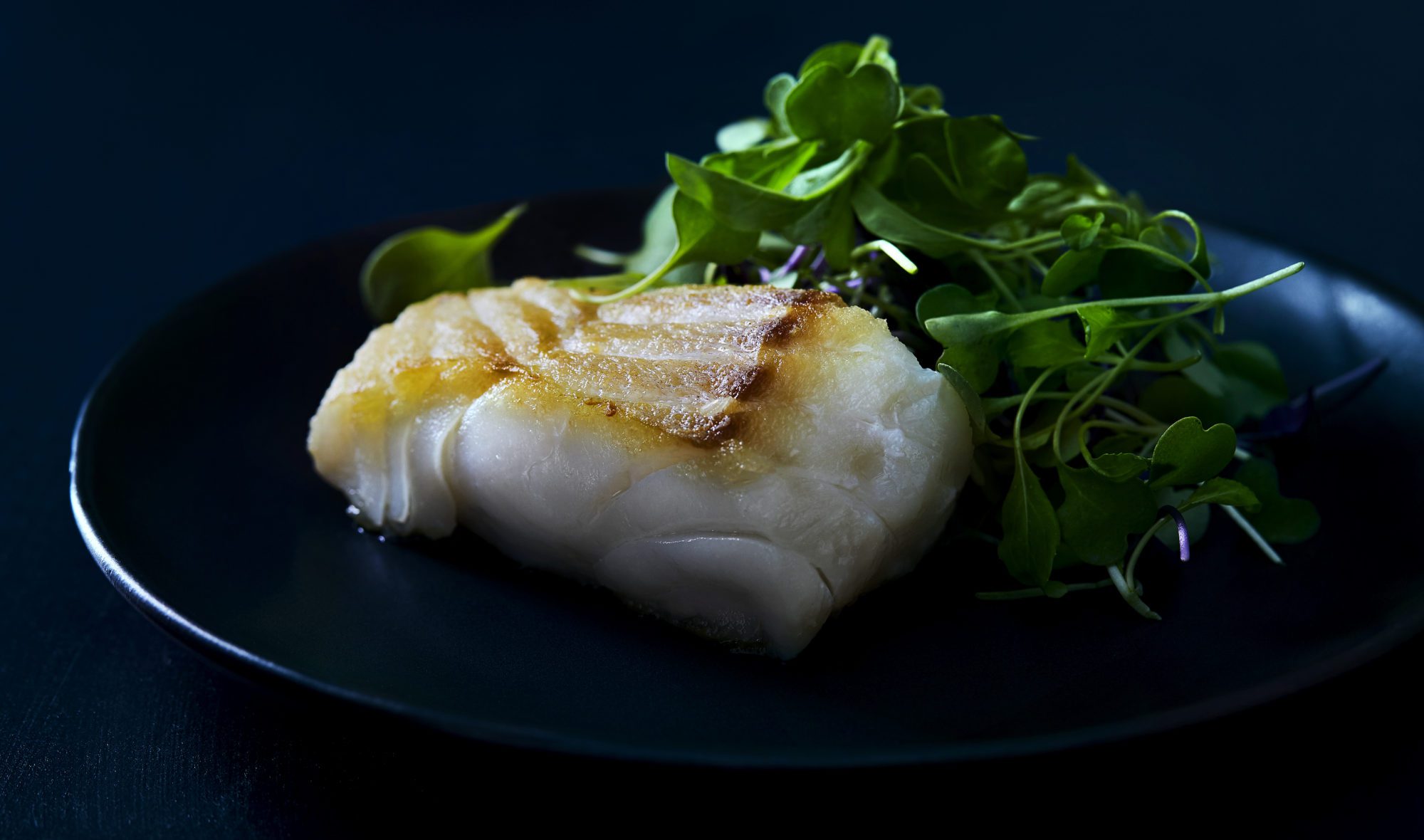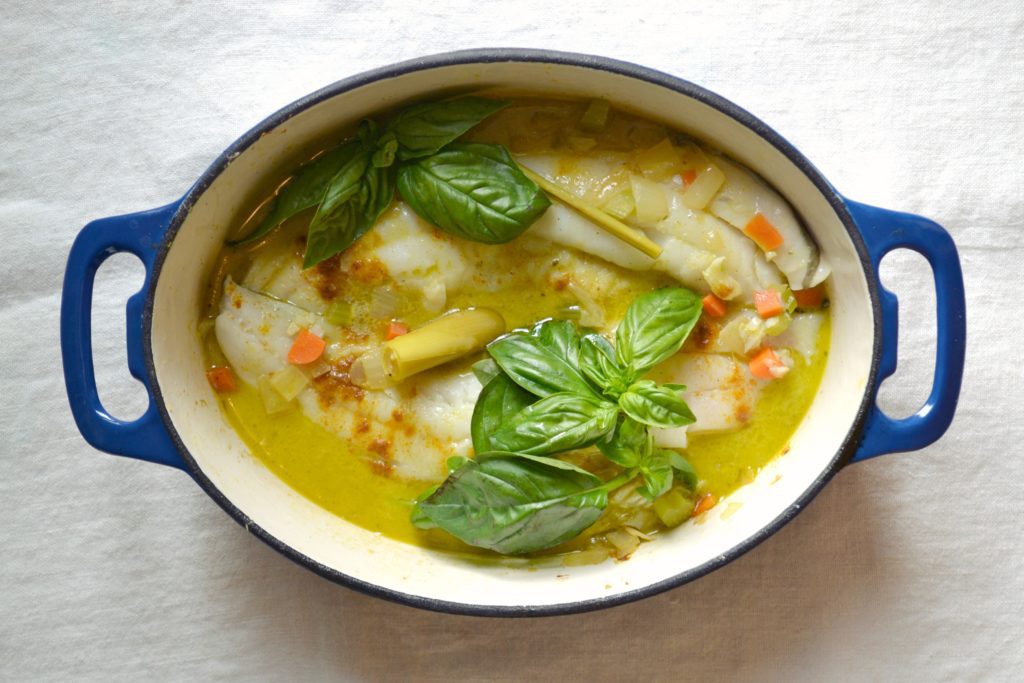
Join PN Level 2 for less than $9 USD/day! Affordable monthly payments now open.

Cod is a white, flaky, mild-flavored fish that refers to a wide umbrella of fish species. The Gadus genus and what genetic purists call “true” cod. They include Atlantic cod, Pacific cod, and Greenland cod. However, the name “cod” also refers to several species in the Gadidae family, the Percomorphi family, and the Scleroparei family, such as Rock cod, blue cod, black cod, ling cod, and many others. The fish termed “cod” in these families are related to the Gadus cods more in culinary than biological terms, as they all sort of taste similar, although genetically they may be unrelated. Cod is an excellent source of lean protein and is also rich in B12, iodine, and selenium. Its mild flavor makes it adaptable in a wide variety of dishes including chowders, curries, and tacos.
A variety of fish bear the cod name. Depending on your perspective, they are either all in the family, or they are imposters.
The term “cod” refers primarily to the Gadus genus. Fish in the Gadus family include Atlantic cod, Pacific cod, and Greenland cod. To genetic purists, these are the “true” cod.
However, the name “cod” also refers to several species in the Gadidae family, the Percomorphi family, and the Scleroparei family, such as Rock cod, blue cod, black cod, ling cod, and many others. The fish termed “cod” in these families are related to the Gadus cods more in culinary than biological terms, as they all possess a white, mild, flaky flesh, but genetically, they belong to different species.
Cod once populated the oceans in large numbers, and in the Middle Ages, it was one of the most commercially important fish in Europe. Due to the fact that it could be preserved through drying, smoking, or salting, it was easy to transport and store and thus was traded widely.
In the year 2000, the WWF declared cod an endangered species. Although there are some signs that cod stocks are recovering, Seafood Watch, a sustainable seafood advisory board, suggests minimizing the consumption of most types of cod.
Cod is a medium-sized fish that ranges in length between 16 and 32 inches long and weighs between four and nine pounds. Its body is covered in silvery scales and delicate grey spots and its flesh is pale.
Cooked cod has a wonderful dense and flaky texture with a mild, slightly sweet flavor.
Cod that has been preserved, either through smoking, drying, or salting, will have a stronger fishy taste and tougher texture.
Three ounces of cooked cod (about 85g) has 89 calories, 19.4g protein, 0.7g of fats, and no carbohydrates, fiber, or sugar. Cod is a good source of B12, iodine, and selenium.
As with most seafood purchases, when selecting cod, shop at quality stores you trust. A good fishmonger should be able to tell you about the fish you are purchasing: what species it is, when and where it was fished, and how to store and prepare it.
Cod may be found fresh, frozen, or preserved (smoked, salted, or dried). Fresh or frozen varieties, which may be sold as steaks, filets, or chunks, are usually the best choices as they are the least likely to contain added ingredients. However, preserved varieties can be nice for specific recipes, when a bolder fishy taste is desired.
Fresh cod should be displayed over ice and should look moist, but not wet, with little separation between the muscle fibers. If you are able to, give it a sniff. Fresh cod should have a pleasant oceanic smell. It should not smell overly strong or offensive.
Trust your nose. If it smells “off”, look elsewhere.
The length of time fresh cod can be stored depends on when the fish was caught, but generally, if well-wrapped in plastic and preferably stored over ice, it can be kept in the fridge for about five days after it is caught. If you don’t know when it was caught, eat it within a day or two.
Cod can also be frozen for about two months. Wrap it well to prevent freezer burn.
Once it’s cooked, cod can be kept in an airtight container in the fridge for five to six days, or in the freezer for two to three months.
Like most fish, fresh cod cooks quickly and is delicious even with minimal seasoning. However, due to its mild flavor and hearty texture, cod is also adaptable to many recipes such as chowders, curries, or even tacos.
Cod can be pan-fried, baked, poached, or cooked in a stew, but pan-frying is among the fastest and easiest.
Here’s how to do it:
Use a paper towel to pat the fish dry on both sides. This will help the fish brown and caramelize. Sprinkle both sides with salt and pepper.
Then, place a bit of olive oil or butter in a non-stick pan and heat over medium-high heat. When a flick of water sizzles when it meets the pan, the fish may be added to the pan. Allow the fish to cook on one side for about three to four minutes. Then, flip the fish and cook on the other side for another few minutes, depending on the thickness of the filet.
Cod takes about 7 minutes to cook per one inch of thickness. Thinner fillets will take less time, and thicker cuts like cod steaks will take longer.
When the fish is ready, it will be opaque and white and the flesh will flake easily. Top with a squeeze of lemon and some capers, and serve immediately.

Cod melts-in-your-mouth when poached in a coconut milk broth with a delicate hint of lemongrass. Top with chopped basil to add freshness, and serve alongside rice or on its own for a simple, yet delicious and lightly exotic meal.
Prep Time: 10 minutes Cook Time: 20 minutes Yield: 4 servings
Place a deep skillet with a lid or a Dutch oven over medium heat and melt the butter. Add the lemongrass, onion, garlic, celery, and carrot, and cook until softened, about 10 minutes.
Put the fish on top of the vegetables, and sprinkle the tops of the filets with curry powder. Pour over the coconut milk, then the broth. There should be enough liquid to just come up to the top of the fish, but not completely cover it.
Raise the heat until the liquid starts to boil, and then remove the pot from the heat, and cover it with a lid. Allow to sit covered for about 10 minutes, after which point the fish should be cooked. You will know it’s done when the flesh flakes easily and has lost its translucency.
Portion into individual bowls, season with salt, and top with fresh chopped basil. Serve with a side of rice to soak up the excess liquid, or serve like a stew on its own.
Precision Nutrition’s Encyclopedia of Food expands every single month as we highlight new foods and showcase beautiful food photography. If you’d like to stay up to date, simply click this link. From there, we’ll send you a FREE copy of our recipe book. We’ll also let you know when new and delicious foods are added to the site.
Cod is a white, flaky, mild-flavored fish that refers to a wide umbrella of fish species. The Gadus genus and what genetic purists call “true” cod. They include Atlantic cod, Pacific cod, and Greenland cod. However, the name “cod” also refers to several species in the Gadidae family, the Percomorphi family, and the Scleroparei family, such as Rock cod, blue cod, black cod, ling cod, and many others. The fish termed “cod” in these families are related to the Gadus cods more in culinary than biological terms, as they all sort of taste similar, although genetically they may be unrelated. Cod is an excellent source of lean protein and is also rich in B12, iodine, and selenium. Its mild flavor makes it adaptable in a wide variety of dishes including chowders, curries, and tacos.